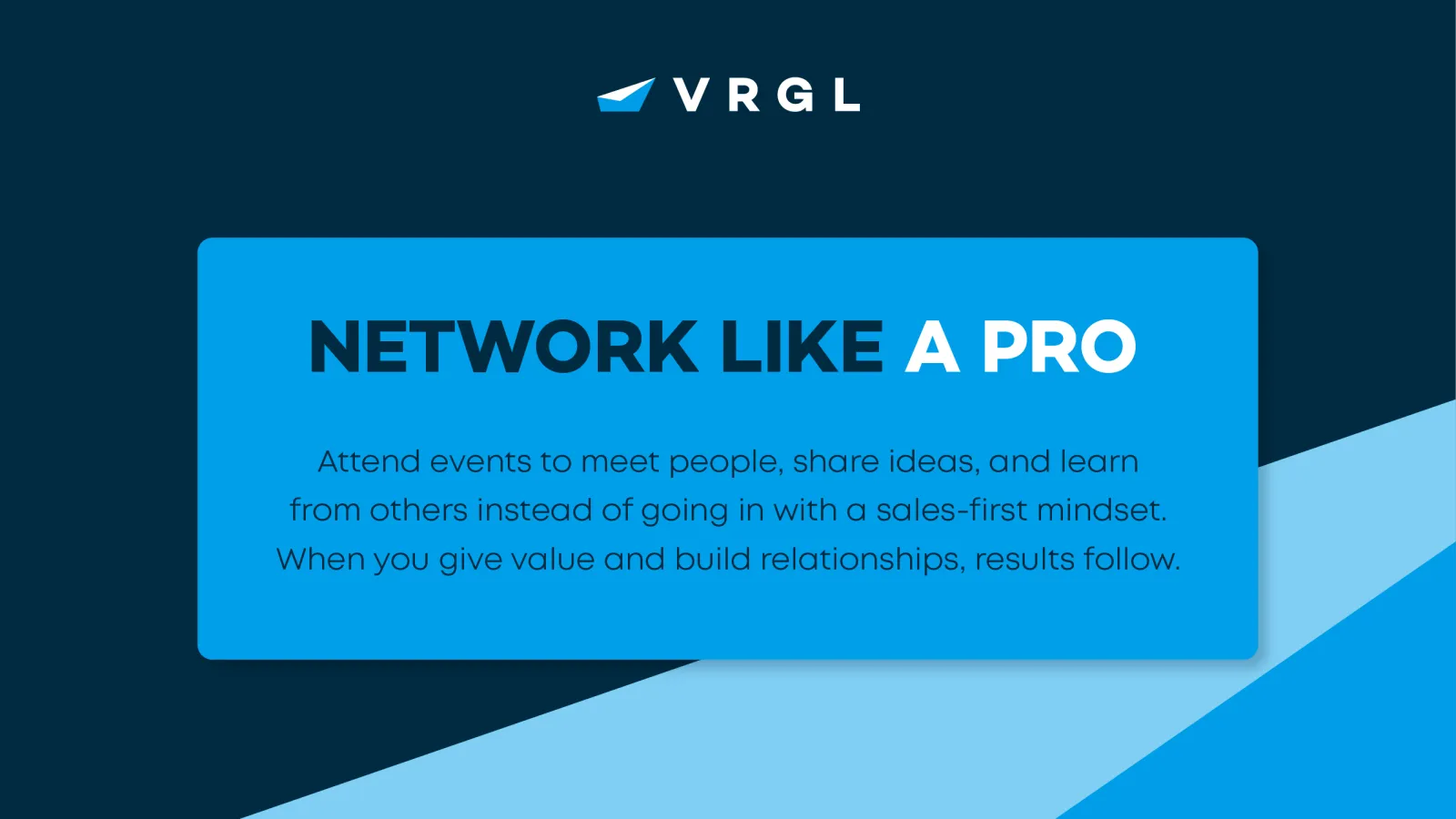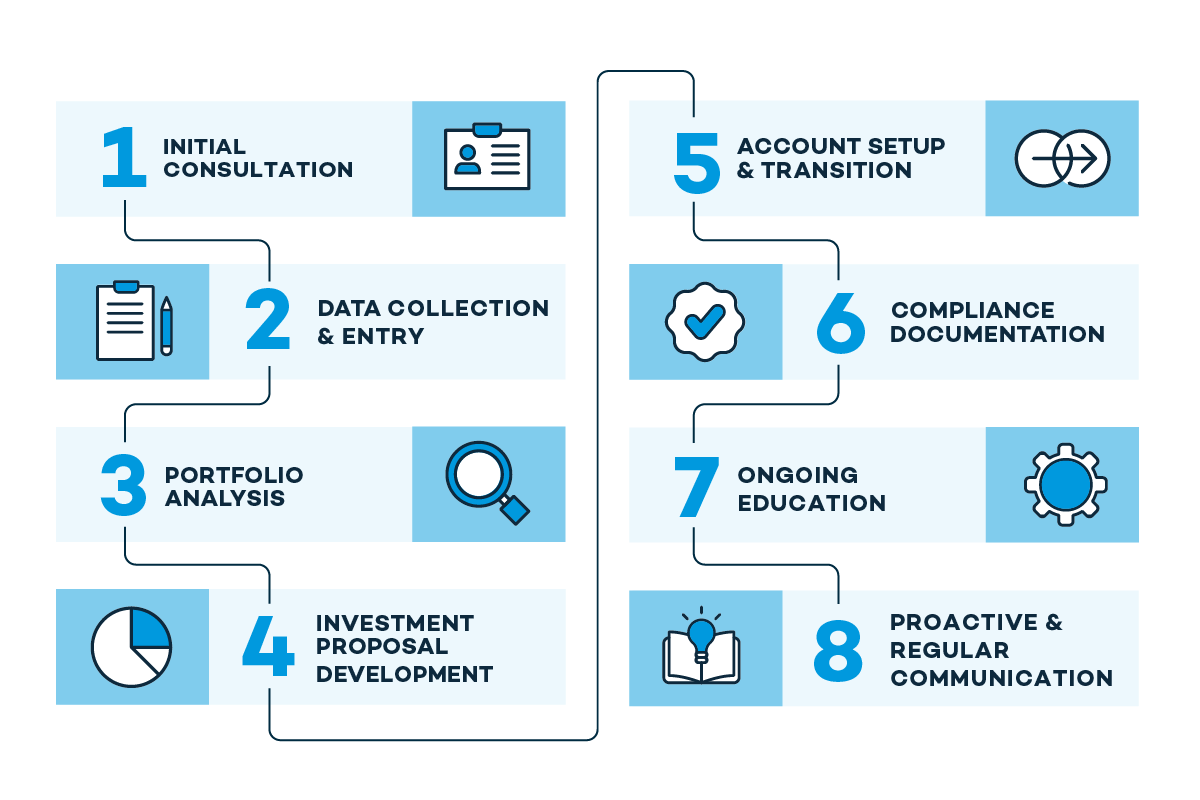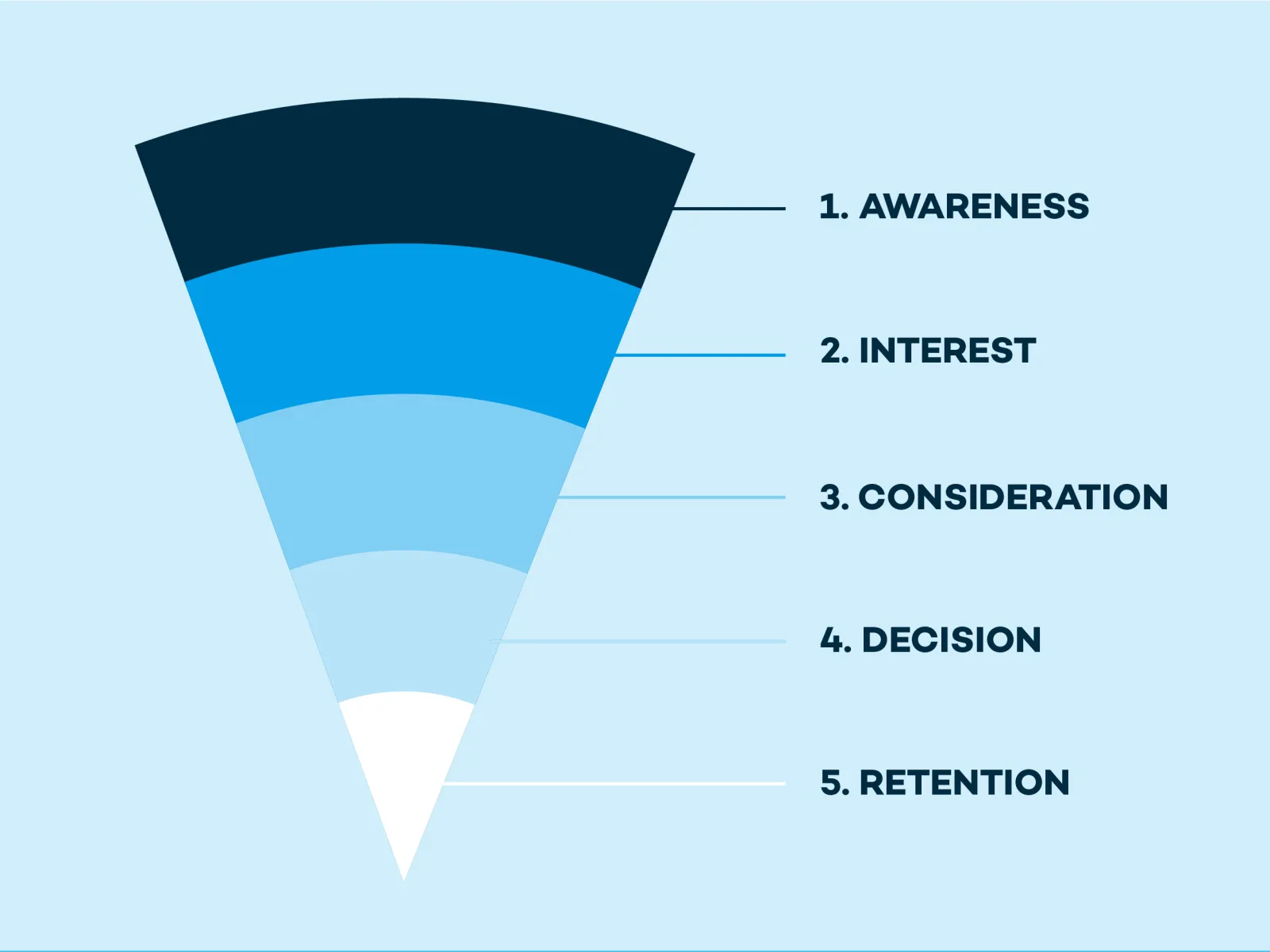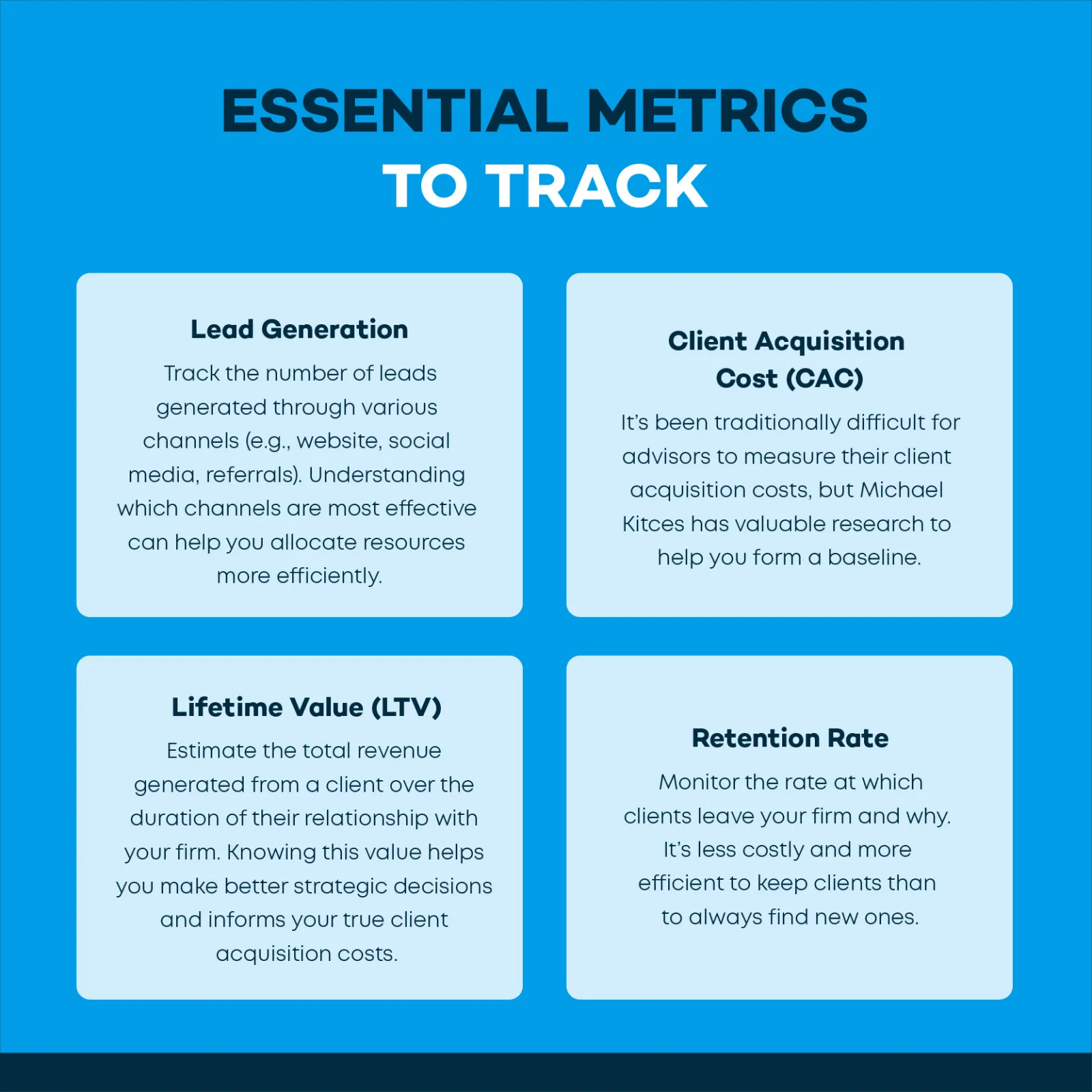INDUSTRY INSIGHTS
20 JUNE 2024
The Ultimate Guide to Accelerating Client Acquisition for Financial Advisors
It's a fiercely competitive world for financial advisors, with 350,000 financial advisors now in the United States.
There are more advisors, and types of advisors, than ever competing for client assets, which makes efficiently acquiring new clients critical for any RIA hoping to sustain growth and maintain a competitive edge in the modern consumer landscape.
This comprehensive guide presents strategies, tools, and processes that you can leverage to accelerate your firm's client acquisition process. By integrating the latest in advisor WealthTech, refining marketing strategies, and optimizing client onboarding, you can enhance your outreach and improve conversion rates.
Table of Contents
- Understanding Client Acquisition Software for Advisors
- Strategies for Organic Customer Acquisition for Advisors
- Creating an Effective Client Onboarding Checklist
- Building a Client Acquisition Funnel for Advisors
- Advanced Techniques and Best Practices for Client Acquisition
- Measuring and Analyzing Client Acquisition Success
1. Understanding Client Acquisition Software for Advisors
Client acquisition software is an essential piece of the modern tech stack for growth-oriented financial advisors. These tools automate and optimize each stage of the client acquisition journey, improving efficiency and client satisfaction.
Here are the key features and benefits you can expect when you adopt dedicated client acquisition tools into your firm:
Key Features of Client Acquisition Software
- Automated Data Extraction: Quickly extracting and consolidating client portfolio information, providing a detailed overview of the client's financial standing, is a must for the time-starved advisor.
- Comprehensive Analytics: Tools offering in-depth analytics, like VRGL's 5 Pillar Analytics, help to evaluate performance, risk, diversification, taxes, and fees. In the end, you get more informed decision-making and personalized client proposals that are accurate and complete.
- Proposal Management: Create compliant, white-labeled documents that effectively compare a prospect's current portfolio with the update your team proposes, and highlight your value proposition easily.
Key Benefits
- Efficiency: By reducing the time required for portfolio analysis and proposal creation, you can focus on communication and strategic planning rather than time-consuming manual tasks.
- Improved Conversion Rates: Personalized, detailed proposals that clearly communicate your value give you the ability to enhance conversion rates.
2. Proven Strategies to Support Organic Customer Acquisition for Advisors
Every advisory firm wants organic growth, but relatively few have the processes and strategy in place to achieve the kind of year-over-year growth rates that they truly want. Recent studies put the typical organic growth rate among advisors around the 3% mark.
A quick definition: Organic customer acquisition for advisors involves attracting clients without relying on paid advertising.
This approach leverages content marketing, social media engagement, and professional networking to build a strong, reputable brand presence. In this section, we'll discuss effective strategies you can use to improve your firm's organic growth.
3 of the Most Effective Organic Acquisition Strategies for Advisors
1. Content Marketing
- Blogging: Regularly publish educational posts that provide actionable advice and target the problems and concerns your target audience need to solve. By focusing on intentional searches, you can drive traffic and establish yourself as a thought leader for your ideal clients.
- White Papers and Guides: A good blog should include an easy next step, so offer detailed guides and research papers whenever possible to capture leads and provide a pathway to nurturing relationships.
- Testimonials and Case Studies: You'll want to ask compliance first, but the updated SEC Marketing Rule now allows for advisors to have real clients share real stories, building trust and credibility with prospects in similar situations.
2. Social Media Engagement
- LinkedIn: Share your content, participate in discussions, and connect with potential clients by sharing useful and valuable information. LinkedIn is particularly effective for engaging with committed, career-oriented people. If you're looking for retirees, you may put more effort into Facebook. Either way, invest in showcasing your humanity on social media, not selling.
- Webinars: Host live sessions discussing current financial trends, answering questions, and providing value on specific problems. In years past advisors would do this same type of presentation with a dinner seminar, but you can save time and be more efficient with a digital approach.
3. Networking
- Industry Events: Attend local meetups and join organizations frequented by your ideal clients. These events are excellent opportunities to meet potential clients and new partners — which leads us to the next point.
- Referral Programs: Build a standardized way to ask your existing clients to refer new prospects who could benefit from your help, but also invest in COIs (Centers of Influence) like CPAs and attorneys who serve a similar demographic. Advisors have traditionally grown through referrals, and word-of-mouth is still effective. But remember, excellent service and a great client experience will influence this growth channel the most.

3. Creating an Effective Client Onboarding Checklist
A well-structured data intake and onboarding process is a must for establishing a positive relationship from the very beginning. To help jumpstart your process buildout, this section outlines a comprehensive onboarding checklist so you can have everything you need to integrate new clients smoothly and create a consistent experience for everyone.

Client Onboarding Checklist
1. Initial Consultation
This meeting may look different for each advisor, but there are two items that should remain consistent no matter who you are:
- Discuss Goals: Being an advisor is about how a client's money fuels their life goals - start with getting to know them and what they want to achieve. The nuts and bolts of investing can come later.
- Gather Documents: Collect all necessary documents, such as investment statements, tax returns, and identification. Most often, you'll ask for these and receive them after that first meeting is complete.
2. Data Collection and Entry
Automating your data intake process is a must for the modern efficient advisory firm. Start with assessing risk tolerance, then automated statement extraction and aggregation to move you quickly onto the next step.
3. Portfolio Analysis
Analyze the client's current portfolio to identify strengths, weaknesses, and opportunities. With a firm understanding of their current situation and risk tolerance, you can move confidently into proposing a new portfolio that better fits their needs and goals.
4. Investment Proposal Development
Design, edit, and compose an investment proposal that aligns with the client's goals and risk tolerance. Including next-level value like tax transition information can set your proposal apart from another.
5. Account Setup and Transition
Help the client set up new accounts and transfer existing assets with a digital onboarding workflow to ensure all paperwork is completed correctly.
6. Compliance Documentation
If we all know one thing about being an advisor, it's that compliance has to have an active role in the process. Make sure all actions comply with regulatory requirements and that all necessary documentation is signed, filed, and archived.
7. Ongoing Education
Offer resources to help clients understand their new portfolio and investment strategy and the way that you approach ongoing management. This is where your organic growth strategies, like creating blogs and in-depth guides, can also play a helpful role in communication.
8. Proactive and Regular Communication
The number one reason clients leave an advisor is due to lack of quality communication. Plan regular check-ins to review portfolio performance and make necessary adjustments to help you maintain an open line of communication.
4. Building a Client Acquisition Funnel for Advisors
A structured client acquisition funnel guides prospects from initial awareness to becoming loyal clients for years on end. Each stage of the funnel should address specific needs, facilitating a smooth progression from first contact to dedicated relationship.

Stages of the Client Acquisition Funnel
1. Awareness
The first step is simply to make new prospects aware that your firm exists and can solve their problems.
- Content Marketing: Publish educational blogs, guides, and client testimonials to attract potential clients.
- SEO Optimization: Optimize your content for search engines to increase visibility and increase your brand authority.
2. Interest
Step two is to engage with prospects who not only know you're available, but have an interest in the services you provide.
- Engagement Tactics: Use webinars, educational resources, and even free consultations or limited financial plans can engage prospects and draw them into your marketing funnel.
- Email Marketing: Send targeted and automated emails that provide valuable content and encourage further interaction to push prospects closer to decision points.
3. Consideration
The next step engages prospects who are not only interested, but actively considering their next move.
- Client Testimonials: Share testimonials and success stories from your current clients to build trust with prospects who share similar concerns.
- Case Studies: If your firm doesn't have testimonials or you aren't yet prepared to wade into this new territory, create fictional case studies that paint a picture of how you help in specific situations.
4. Decision
Here's where it gets interesting. Prospects are ready to commit to a new advisor.
- Address Concerns: Be available to answer any questions and address concerns promptly, either before or after your first meeting.
- Investment Proposals: A hyper-personalized investment proposal and risk tolerance process can demonstrate your expertise and clearly communicate the benefits of your investment strategy.
5. Retention
Once you have a client, delivering exceptional service is the best way to keep them.
- Proactive Communication: Maintain regular communication with clients, based on how they want to hear from you. Email, snail mail, or phone calls can all be options.
- Continuous Improvement: Solicit regular feedback to improve your services, address concerns, and add new ways to provide value over time.
5. Advanced Techniques and Best Practices for Client Acquisition
Beyond the basics, several advanced techniques and best practices can further enhance your client acquisition efforts.
Leveraging WealthTech and Automation Tools
- CRM Systems: Use customer relationship management (CRM) systems to track interactions with prospects and clients, manage leads, and automate follow-up processes. Purpose-built advisor CRMs like Redtail and Wealthbox can help streamline communication in each step of the client relationship.
- Marketing Automation: Tools like Mailchimp and Hubspot can automate email marketing campaigns, segment prospects by interests, and help you easily personalize communication and nurture relationships.
- AI and Machine Learning: Ready to step into the future? Implement AI-driven tools for predictive analytics like Catchlight, which can forecast client behavior and identify high-potential leads.
Personalization and Customization
- Tailored Content: Personalize your marketing content based on the prospect's preferences and indicated interests. This can include automated emails, personalized landing pages for different ideal client personas, and hyper-personalized investment proposals.
- Behavioral Segmentation: Segment your audience based on behavior, interests, and demographics to deliver more relevant content and offers. This is a next-level step in building out a client acquisition machine, but the more specific that you can be in communication the more relevant and valuable you'll appear to each prospect.
Data-Driven Decision Making
- Analytics Tools: Use analytics tools to track the performance of your marketing campaigns and client acquisition strategies. Tools like Google Analytics, Salesforce Tableau, and other data visualization tools can provide insights into what's working, what's not, and where you need to make adjustments.
- A/B Testing: Conduct A/B tests on various marketing elements like your email subject lines, call-to-action buttons, and landing pages. This type of testing will help you determine what resonates best with your audience so you can optimize your efforts to improve conversion rates.
Build Trust and Credibility
- Client Testimonials: We aren't repeating ourselves; we simply believe in the power of testimonials. Showcase positive reviews wherever you can on your website and marketing materials using compliant solutions like Wealthtender or Testimonial IQ.
- Thought Leadership: Publish your own thought leadership articles that demonstrate expertise or establish relationships with local journalists to show up frequently where your prospects get news. You can also speak at industry events to enhance your reputation.
Networking and Partnerships
- Strategic Partnerships: Form partnerships with other professionals in related fields — like CPAs, estate planners, and attorneys — to expand your client base. Collaborative events and co-marketing efforts can provide mutual benefits so you each get value.
- Community Engagement: Don't focus so much on digital that you forget about the impact that in-person events can have. Participate in local community events and organizations to build relationships and establish your presence in your community. You can even invest in the tried-and-true method of in-person seminars but with a modern twist.
6. Measuring and Analyzing Client Acquisition Success
To ensure the effectiveness of your client acquisition strategies, it's crucial to identify, measure, and analyze your key performance indicators (KPIs) regularly.
Here are some essential metrics to track.
Key Performance Indicators (KPIs):
- Lead Generation: Track the number of leads generated through various channels (e.g., website, social media, referrals). Understanding which channels are most effective can help you allocate resources more efficiently.
- Client Acquisition Cost (CAC): It's been traditionally difficult for advisors to measure their client acquisition costs, but Michael Kitces has valuable research to help you form a baseline.
- Lifetime Value (LTV): Estimate the total revenue generated from a client over the duration of their relationship with your firm. Knowing this value helps you make better strategic decisions and informs your true client acquisition costs.
- Retention Rate: Monitor the rate at which clients leave your firm and why. It's less costly and more efficient to keep clients than to always find new ones.

Analytical Tools
- Marketing Analytics: Tools like Google Analytics, SEMrush, and HubSpot provide valuable data on website traffic, user behavior, and campaign performance.
- Client Feedback: Create a process to collect feedback from clients through annual surveys and aggregate the data into a Net Promoter Score. Understanding client satisfaction and pain points helps you to improve client service and address issues before they lead to disruptive events. Your CRM can be a useful tool in this process.
Conclusion
An effective client acquisition process requires a combination of technology, personalized marketing, and data-driven decision-making. By leveraging advanced tools, refining your strategies, and continuously measuring important performance metrics, you can enhance your client acquisition efforts and vault your firm into the higher tiers of RIA firms who are growing year-over-year.
Incorporating a dedicated client acquisition platform, creating an efficient onboarding process followed by every advisor in your firm, and building a structured client acquisition funnel with automated actions to move prospects to decision points are essential keys for success.
Additionally, adopting advanced techniques such as marketing automation software, automated statement aggregation and extraction tools, and hyper-personalized investment proposals can further boost your efforts and improve your conversion rates, like this advisory firm who accelerated client acquisition by 50% with a new technology solution.
Regularly analyzing key performance indicators ensures that you stay on track and make informed decisions to optimize your strategies.
By implementing the comprehensive strategies and best practices found in this guide, your firm can effectively attract, engage, and retain clients, ultimately driving your business forward and setting you apart from an increasing number of competitive financial professionals.